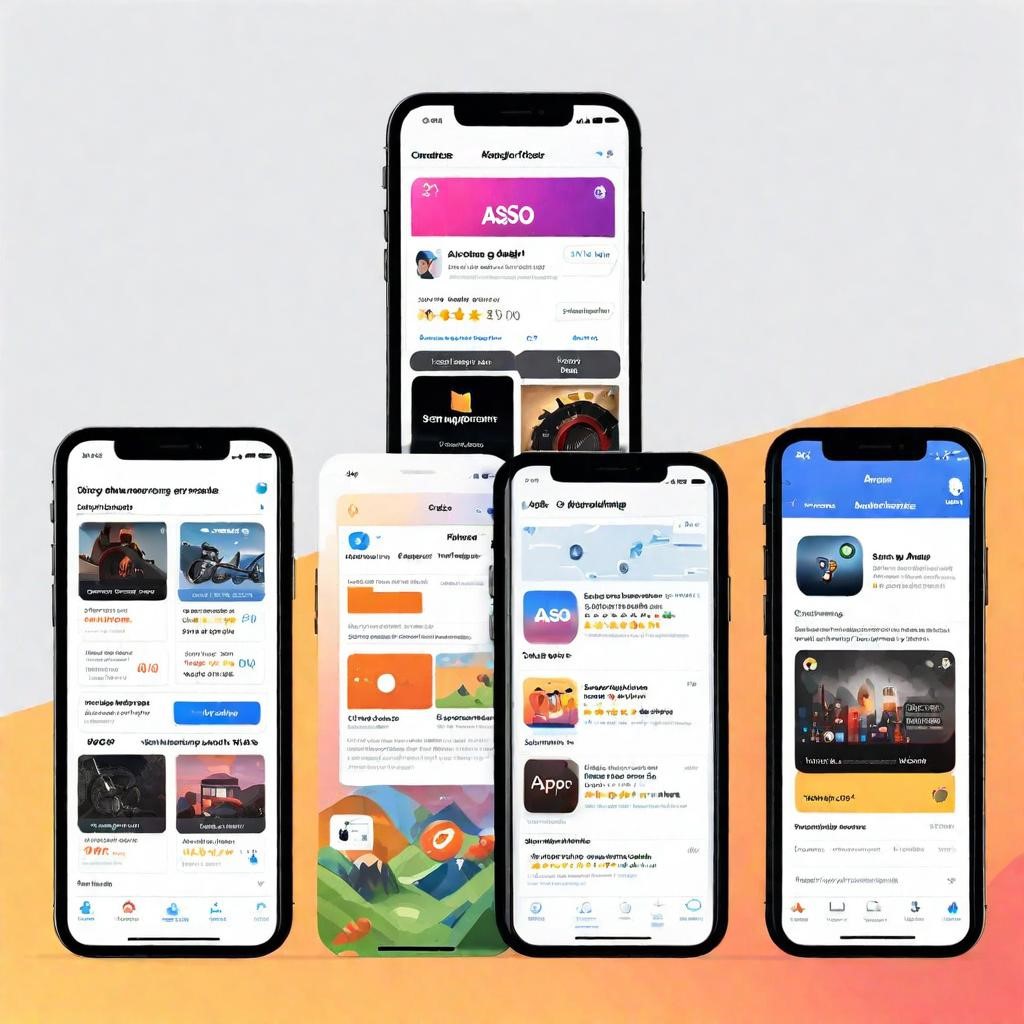Introduction
In today’s fiercely competitive app market, Boosting your app’s visibility stands out and attracts users is essential for its success. This comprehensive guide aims to equip you with the necessary strategies to not only boost your app’s visibility but also expand your user base significantly. We’ll delve into crucial topics such as understanding your target audience, optimizing app store listings, leveraging ASO techniques, utilizing social media effectively, implementing mobile app SEO, developing robust marketing strategies, enhancing user engagement, utilizing data analytics, and drawing inspiration from successful case studies.

2. Understanding Your Target Audience
To effectively enhance your app’s visibility and attract more users, gaining a deep understanding of your target audience is paramount.
Conducting Market Research:
Utilizing Analytics Tools:
Employ robust analytics tools such as Google Analytics, App Annie, and Sensor Tower to gather comprehensive data on user demographics, behavior patterns, and preferences. These tools provide detailed insights into how users interact with your app, including session durations, feature usage, and geographical distribution. Analyzing this data helps you identify key user segments, understand their specific needs and expectations, and tailor your app’s features and functionalities accordingly.
Surveys and Feedback Mechanisms:
Implement regular surveys and feedback loops among your current user base to collect direct insights into their experiences with your app. Solicit feedback on usability, performance, feature satisfaction, and overall user satisfaction levels. This qualitative data offers valuable perspectives on user pain points, feature requests, and areas for improvement. By listening to your users’ voices, you can prioritize development efforts and enhance user satisfaction, ultimately driving higher retention rates and fostering positive word-of-mouth recommendations.
Analyzing Competitor Strategies:
Thoroughly analyze your competitors to gain a comprehensive understanding of their strengths, weaknesses, and successful tactics. Evaluate their app features, user interfaces, pricing strategies, and customer engagement approaches. Identify gaps in the market where your app can differentiate itself and offer unique value propositions. By benchmarking against industry leaders and emerging players, you can refine your app’s positioning, enhance its competitive advantage, and effectively target underserved or overlooked segments of your audience.
By conducting meticulous market research, leveraging advanced analytics tools, implementing robust survey mechanisms, and analyzing competitor strategies, you can develop a profound understanding of your target audience. This strategic approach enables you to refine your app’s value proposition, optimize user engagement strategies, and effectively position your app in a competitive marketplace, ultimately driving sustainable growth and maximizing user acquisition and retention.

3. Optimizing App Store Listing
An optimized app store listing is crucial for capturing the attention of potential users and encouraging downloads.
Crafting Compelling App Descriptions:
Using Keywords Effectively: Integrate relevant keywords seamlessly into your app’s title and description to improve discoverability and search engine optimization (SEO) within the app store. Choose keywords that align with your target audience’s search queries and reflect the core functionalities and benefits of your app. By strategically placing keywords, you can increase your app’s visibility in search results and attract qualified users who are actively searching for solutions that your app provides.
Highlighting Unique Selling Points (USPs): Clearly communicate the unique value propositions that distinguish your app from competitors. Emphasize specific features, benefits, or functionalities that solve common user pain points or offer innovative solutions. Highlighting USPs helps potential users quickly understand why they should choose your app over others in the crowded app marketplace. This clear differentiation can significantly influence their decision-making process and increase the likelihood of downloads and conversions.
A/B Testing Descriptions: Conduct A/B testing with variations of your app descriptions to evaluate which messaging resonates most effectively with your target audience. Test different language styles, tone, and formatting to determine which version generates higher engagement rates and conversion metrics. A/B testing provides valuable insights into user preferences and behaviors, allowing you to refine and optimize your app store listing for maximum impact. By continuously iterating based on data-driven results, you can enhance the effectiveness of your app’s messaging and improve overall user acquisition efforts.
By optimizing your app store listing through effective keyword integration, highlighting compelling USPs, and leveraging A/B testing methodologies, you can enhance visibility, attract qualified users, and increase downloads. A well-crafted app store presence not only drives initial user acquisition but also contributes to long-term success by positioning your app as a valuable solution in the competitive app marketplace.

4. App Store Optimization (ASO) Techniques
ASO plays a critical role in enhancing your app’s visibility and discoverability within the highly competitive app store ecosystem.
Optimizing Keywords and Titles:
Conduct thorough keyword research using tools like Google Keyword Planner and App Store Optimization platforms. Identify relevant search terms and phrases that align with your app’s features, functionalities, and target audience. Integrate these keywords naturally into your app’s title, subtitle, and description to improve its chances of appearing in relevant search results. By strategically placing keywords, you can increase organic traffic and attract users who are actively searching for apps like yours.
Improving Ratings and Reviews:
Actively encourage satisfied users to leave positive reviews and ratings on the app store. Positive reviews not only serve as social proof but also influence potential users’ decisions to download your app. Higher ratings and positive feedback enhance your app’s credibility and trustworthiness, which can significantly impact its ranking in search results. Monitor reviews regularly, respond to user feedback promptly, and address any concerns or issues raised by users to maintain a positive reputation and encourage ongoing engagement.
Updating App Icon and Screenshots:
Regularly refresh your app’s icon and screenshots to reflect the latest updates, features, or design improvements. Visual elements are often the first impression potential users have of your app, influencing their decision to explore further or download. Ensure that your app’s visual assets are compelling, visually appealing, and accurately represent the core functionalities and benefits of your app. Test different variations of app icons and screenshots to determine which ones resonate best with your target audience and lead to higher conversion rates.
Monitoring and Adjusting Strategy:
Utilize analytics tools such as App Annie, Sensor Tower, and Firebase to track key performance metrics. Monitor metrics such as app downloads, conversion rates, retention rates, and user engagement to evaluate the effectiveness of your ASO strategy. Analyze user behavior, including search queries and traffic sources, to identify opportunities for optimization. Continuously iterate and refine your ASO strategy based on data-driven insights and market trends. Adjust keywords, descriptions, and visual assets regularly to stay competitive and maximize your app’s visibility in the app store rankings.
By implementing a comprehensive ASO strategy that includes optimizing keywords and titles, improving ratings and reviews, updating visual assets, and continuously monitoring performance metrics, you can enhance your app’s visibility, attract more qualified users, and ultimately drive downloads and user engagement.

5. Mobile App SEO:
Effective SEO practices are essential for driving organic traffic to your app’s download page and increasing its visibility beyond the app store.
Importance of SEO for Apps:
SEO plays a vital role in improving your app’s search engine rankings, making it easier for users to discover your app through web searches and app store searches. By optimizing your app’s online presence, you enhance its visibility and attract more qualified users who are actively searching for apps like yours. This increased visibility not only drives organic traffic but also boosts app downloads and user acquisition rates over time.
On-Page SEO Strategies:
Optimize your app’s website and landing pages with relevant keywords and high-quality content that addresses common user queries. Develop informative and engaging content that not only describes your app’s features and functionalities but also provides valuable insights and solutions to potential user needs. By focusing on user intent and relevance, you can improve your app’s ranking in search engine results pages (SERPs) and encourage users to explore and download your app.
Off-Page SEO Strategies:
Build a strong backlink profile by securing links from reputable websites and blogs within your app’s niche. Participate in guest blogging opportunities and collaborate on content creation with influencers and industry experts to establish your app’s authority and credibility. Quality backlinks from relevant sources not only drive referral traffic but also signal to search engines that your app is trustworthy and valuable, thereby improving its overall search ranking and visibility.
Leveraging Global Search Trends:
Use tools like Google Trends to identify and capitalize on global search trends relevant to your app’s niche. Monitor trending topics and popular keywords to adjust your content strategy and align it with current user interests and search behaviors. By staying abreast of global search trends, you can adapt your SEO tactics proactively to attract a broader audience and increase your app’s visibility across different regions and demographics.
Best Practices for Linking and Backlinks:
Focus on acquiring high-quality backlinks from authoritative sources that are relevant to your app’s industry or niche. Quality backlinks not only enhance your app’s search engine ranking but also establish credibility and trustworthiness among users and app store algorithms. Implement ethical link-building practices and avoid black-hat SEO techniques to maintain long-term SEO success and safeguard your app’s reputation.
Measuring SEO Success:
Regularly monitor and analyze key SEO metrics such as organic traffic, keyword rankings, and backlink profile using tools like Google Analytics and SEMrush. Evaluate the impact of your SEO efforts on app visibility, user engagement, and conversion rates. Use data-driven insights to refine your SEO strategy, make necessary adjustments, and optimize performance to achieve your app’s growth objectives effectively.
By implementing comprehensive Mobile App SEO strategies encompassing on-page optimization, off-page link-building, leveraging global search trends, and continuous performance measurement, you can enhance your app’s online visibility, attract more organic traffic, and ultimately drive sustainable growth in app downloads and user acquisition.

6. App Marketing Strategies
A well-rounded marketing strategy is crucial for promoting your app effectively and reaching a wider audience.
Leveraging Social Media Platforms:
Building Strong Presence: Establish a compelling presence on popular social media platforms like Instagram, Twitter, and LinkedIn. Share engaging content related to your app’s niche to attract followers and build a community around your brand.
Engaging with Users: Actively interact with your audience by responding to comments, messages, and mentions. Foster genuine conversations to build trust and loyalty among your followers.
Sharing Interesting Content: Create and share valuable content such as blog posts, infographics, and videos that educate and entertain your audience. Position your app as a valuable resource within your industry to attract and retain users.
Collaborating with Influencers: Partner with influencers who align with your app’s values and target audience. Influencers can help amplify your reach and credibility by promoting your app to their followers through authentic and engaging content.
Content Marketing and Blogging: Develop a content marketing strategy that includes creating informative and insightful blog posts, infographics, and videos. Share content that addresses common pain points or interests of your target audience, establishing your app as a thought leader in the industry.
Paid Advertising and Promotions:
Running Targeted Ad Campaigns: Utilize paid advertising platforms such as Google Ads and Facebook Ads to run targeted campaigns. Segment your audience based on demographics, interests, and behaviors to reach potential users who are most likely to download your app.
Collaborating with App Review Websites: Partner with reputable app review websites and influencers in your industry to generate reviews and coverage for your app. Positive reviews and endorsements can significantly increase your app’s credibility and visibility among potential users.
Offering Promotions and Discounts: Create limited-time promotions and discounts to incentivize new users to download and try your app. Discounts and special offers can attract users who are price-sensitive and looking for a good deal.
Using Social Media Ads Effectively: Leverage paid advertising on social media platforms to reach specific demographics and target audiences. Customize your ad content and messaging to resonate with different audience segments and encourage app downloads.

7. User Engagement and Retention
Maintaining user engagement and retention is crucial for sustaining long-term app success and maximizing user lifetime value.
Utilizing Push Notifications and In-App Messages:
Personalization: Send personalized push notifications and in-app messages to deliver relevant updates, reminders, and promotions to users. Tailor your messages based on user behavior and preferences to enhance engagement without overwhelming users.
Gamification and Loyalty Programs:
Enhancing Interaction: Integrate gamification elements such as rewards, badges, and challenges into your app. Gamification makes the user experience more interactive and enjoyable, encouraging users to return frequently and engage with your app.
Analyzing User Feedback and Data:
Continuous Improvement: Actively collect and analyze user feedback through surveys, reviews, and analytics tools. Use this data to identify areas for improvement, address user concerns, and enhance features that resonate with your audience.

8. Data Analytics for App Growth
Harnessing data analytics is essential for making informed decisions and optimizing your app’s performance.
Role of Data Analytics in App Growth:
Harnessing data analytics is critical for optimizing your app’s performance and making informed decisions. By using tools like Google Analytics, Mixpanel, and Flurry, you gain deep insights into user behavior, preferences, and interactions. Analyzing metrics such as daily active users (DAU), retention rate, and user lifetime value (LTV) provides a comprehensive view of how users engage with your app over time. These insights enable you to identify patterns, understand user satisfaction levels, and pinpoint opportunities for enhancing user experience and driving growth. Ultimately, data analytics empowers you to strategically allocate resources, prioritize feature development, and refine marketing strategies to maximize app performance and achieve long-term success.
Tools for Tracking and Analyzing App Performance:
Implementing robust analytics platforms is essential for conducting comprehensive analysis of your app’s performance metrics. These tools enable you to track and measure key indicators such as user acquisition channels, engagement rates, and conversion funnels with precision and accuracy. By monitoring these metrics closely, you can identify strengths and weaknesses in your app’s user journey, pinpoint areas for optimization, and refine your app’s marketing and user acquisition strategies accordingly. Regularly evaluating app performance through data-driven insights helps you stay agile, responsive to market dynamics, and proactive in addressing user needs, ensuring sustained growth and competitiveness in the dynamic app market landscape.

9. Successful Case Studies
Learning from successful case studies provides valuable insights and inspiration for optimizing your app strategy.
Lessons Learned:
Practical Examples: Explore real-world case studies of apps that have achieved success through innovative strategies and effective execution. Learn from their approaches to ASO, marketing campaigns, user engagement tactics, and data-driven decision-making.

10. Conclusion
Achieving sustainable growth for your app requires a strategic and holistic approach across various facets of app development and marketing.
Actionable Steps:
Take actionable steps based on the strategies outlined in this guide to enhance your app’s visibility, engage users effectively, and drive growth. Continuously refine your approach based on user feedback, market trends, and performance analytics to stay competitive.
Final Thoughts:
Adaptability and Innovation are crucial pillars for sustained success in the competitive app market. Here’s how you can leverage them effectively
In summary, by embracing adaptability and innovation across your app’s features, marketing strategies, user engagement tactics, and business models, you can effectively navigate market uncertainties, meet evolving user expectations, and position your app for sustained success and growth in the dynamic app ecosystem.







